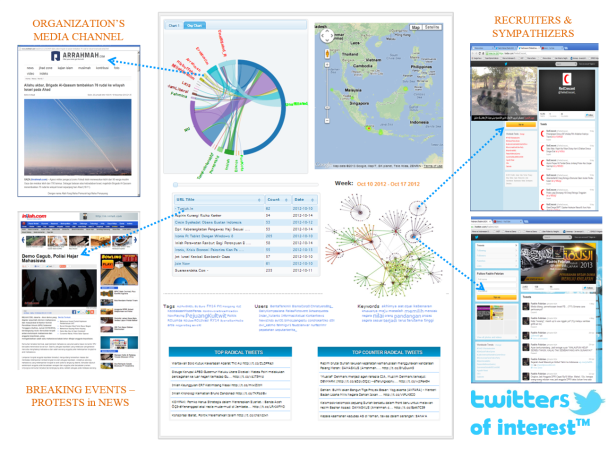Michele Piercey, Carolyn Forbes, and Hasan Davulcu at Devex:”People think and say all sorts of things that they would never actually do. One of the biggest challenges in countering violent extremism is not only figuring out which people hold radical views, but who is most likely to join and act on behalf of violent extremist organizations. Determining who is likely to become violent is key to designing and evaluating more targeted interventions, but it has proven to be extremely difficult.
There are few recognized tools for assessing perceptions and beliefs, such as whether community sentiment about violent extremist organizations is more or less favorable, or which narratives and counternarratives resonate with vulnerable populations.
Program designers and monitoring and evaluation staff often rely on perception surveying to assess attitudinal changes that CVE programs try to achieve, but there are limitations to this method. Security and logistical challenges to collecting perception data in a conflict-affected community can make it difficult to get a representative sample, while ensuring the safety of enumerators and respondents. And given the sensitivity of the subject matter, respondents may be reluctant to express their actual beliefs to an outsider (that is, social desirability bias can affect data reliability).
The rise of smartphone technology and social media uptake among the burgeoning youth populations of many conflict-affected countries presents a new opportunity to understand what people believe from a safer distance, lessening the associated risks and data defects. Seeing an opportunity in the growing mass of online public data, the marketing industry has pioneered tools to “scrape” and aggregate the data to help companies paint a clearer picture of consumer behavior and perceptions of brands and products.
These developments present a critical question for CVE programs: Could similar tools be developed that would analyze online public data to identify who is being influenced by which extremist narratives and influences, learn which messages go viral, and distinguish groups and individuals who simply hold radical views from those who support or carry out violence?
Using data to track radicalization
Seeking to answer this question, researchers at Arizona State University’s Center for the Study of Religion and Conflict, Cornell University’s Social Dynamics Laboratory, and Carnegie Mellon’s Center for Computational Analysis of Social and Organizational systems have been innovating a wide variety of data analytics tools. ASU’s LookingGlass tool, for example, maps networks of perception, belief, and influence online. ASU and Chemonics International are now piloting the tool on a CVE program in Libya.
Drawn from the humanities and social and computational sciences, LookingGlass retrieves, categorizes, and analyzes vast amounts of data from across the internet to map the spread of extremist and counter-extremist influence online. The tool displays what people think about their political situation, governments and extremist groups, and tracks changes in these perceptions over time and in response to events. It also lets users visualize how groups emerge, interact, coalesce, and fragment in relation to emerging issues and events and evaluates “information cascades” to assess what causes extremist messages to go viral on social media and what causes them to die out.

For CVE planners, LookingGlass can map social movements in relation to specific countries and regions. Indonesia, for example, has been the site of numerous violent movements and events. A relatively young democracy, the country’s complex political environment encompasses numerous groups seeking radical change across a wide spectrum of social and political issues….(More)”